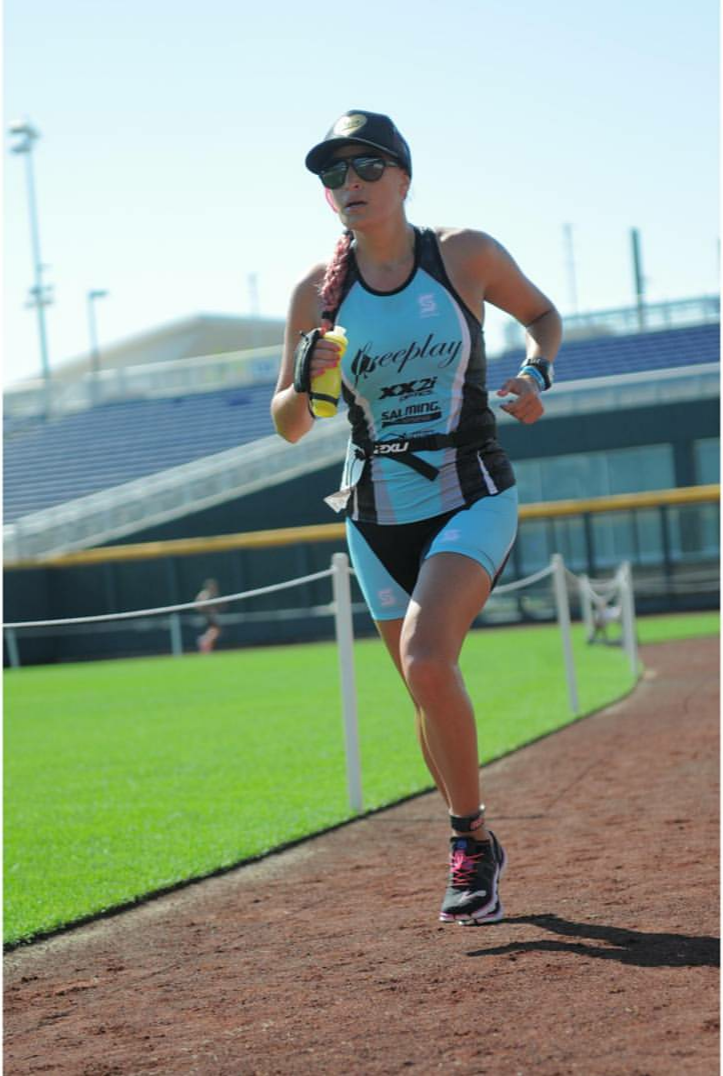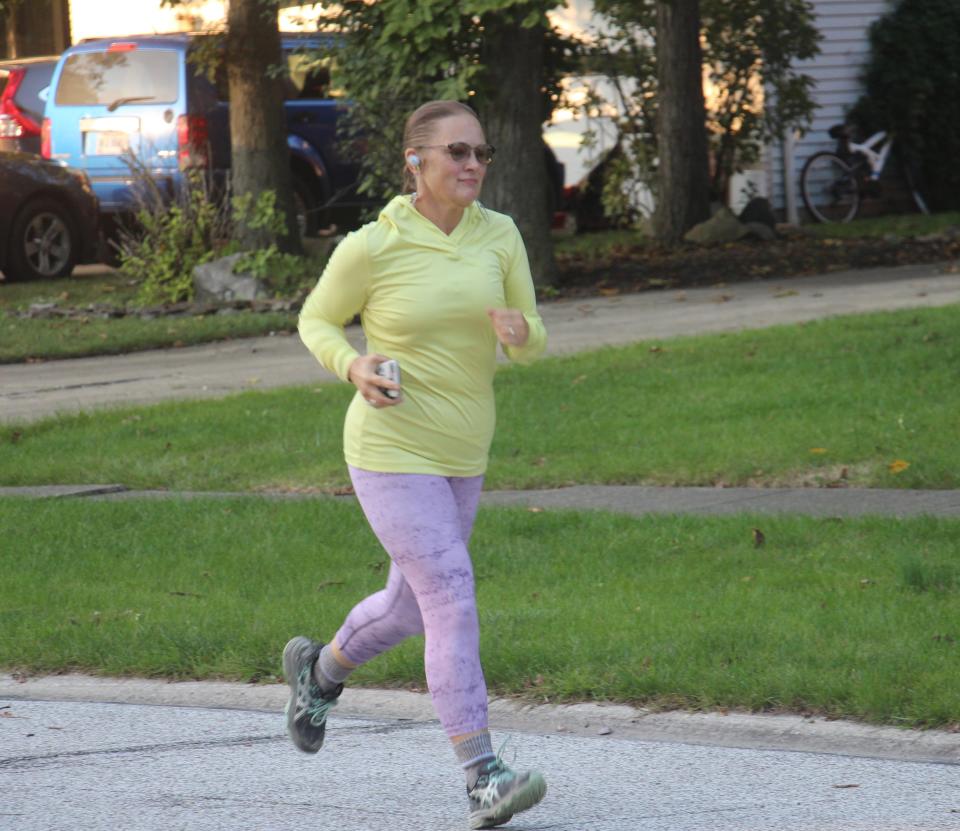'It's my church': 3 women with chronic pain on the unlikely activity that helps relieve it

For people with rheumatoid arthritis (RA) — an autoimmune condition in which a person’s body attacks its own joints, causing painful swelling that can lead to bone erosion and joint deformity — high-intensity exercise such as running was considered off-limits for years.
But over the last 10 to 15 years, research has shown that it can actually help stave off complications such as bone loss, improve pain and functioning, and boost overall mood and fitness.
Yet running with rheumatoid arthritis carries its own challenges, including battling chronic pain, occasional flares and often bone-crushing fatigue.
But there are ways to run while balancing the limitations of the disease. Here are eight things that three female athletes want you to know about running with rheumatoid arthritis:
Yes, you can still run.
Dina Rios, 34, was devastated when she was diagnosed with RA 16 years ago. (Women are up to three times as likely to develop rheumatoid arthritis as men, which typically begins to affect people between the ages of 30 and 60.) A competitive runner, Rios found her training derailed during her freshman year of college when she was plagued by persistent foot pain that wouldn’t ease up even with rest. After seeing several doctors and undergoing many medical tests, she was finally given a diagnosis: rheumatoid arthritis.
“My rheumatologist told me that I would never run again and that I would be in a wheelchair in the near future,” she tells Yahoo Lifestyle. “It was life-shattering. My whole world as I knew it was turned upside down, and ‘who I was’ was being ripped away at the same time.”

Determined to prove the doctors wrong, she kept trying to get back to running over the next nine years, even as two hip replacements and a wrist surgery derailed her. “When I first started running again, I could only run, slowly, for 800 meters,” she recalls. “It was painful and discouraging, but I kept at it because I was done giving up on who I was and the dreams I had.”
She persisted, building up to racing 5Ks, 10Ks and then two half marathons before switching to triathlons, which involved less wear and tear on her body. In 2015, she qualified for and raced at her first USA Triathlon National Championship.
Running is the best therapy.
All three women Yahoo Lifestyle spoke to say that running has helped improve their symptoms, which isn’t surprising, as exercise releases feel-good chemicals in the body called endorphins that relieve pain. “It definitely serves as therapy for me — it’s my ‘church,’” says Rios. “It’s my escape, my outlet. On really difficult days, I take all the mental and physical struggle I have and burn it through my training.”
Running also boosts mood, which is important, as people with rheumatoid arthritis are more likely to have anxiety and depression. “I’m a much nicer person when I run,” jokes Wells.
Start slowly.
When Jeri Strachner, 60, started running a decade ago, she couldn’t jog for more than 30 seconds without gasping for breath. “I was so embarrassed at how out of shape I was, I decided to practice my running in the back of a cemetery, where no one could see me,” she recalls. Strachner began by running 30 seconds on, 30 seconds off, for a half hour up and down the rows of tombstones. Within three months, she’d worked her way up to her first 5K.
Learn to ease up.
Everyone who has RA experiences times when they go through a flare, or a sudden surge in inflammation that increases symptoms like joint pain, joint swelling and fatigue. “The fatigue factor is crazy — it’s like someone took a drill to the bottom of your feet and let all the blood drain out,” says Strachner. “Running becomes a chore — every step you take feels like you’re moving with cement shoes on.”
Strachner’s learned not to push herself through these times, no matter what she’s training for. “I scale back the number of miles I run and the number of days I run, and substitute plenty of pool time instead,” she says.
The key, adds Rios, is to make sure you listen to your body. “As an athlete, it’s extremely frustrating, not just to experience the pain, but to know that while in a flare I’ll lose the hard work I gained from training,” she explains. “It can feel like having to start over. But by allowing myself to rest when I need to, it enables me to be consistent with my training, even if it isn’t always in the capacity I hope for.”
Make sure you get the right support.
Strachner’s runs were initially almost derailed when she developed metatarsalgia, or pain and inflammation under the balls of her feet. “I had a knot on the bottom of my right foot that was so large it felt like I was walking on a golf ball,” she says. Her rheumatologist recommended a certain brand of shoes — Newton — that contain lugs on the bottom to provide extra support and pain relief in that area. “I’m lucky my rheumatologist was a fellow runner and was willing to work with me to make sure I could keep running,” she says.

It takes a village to run.
All the women that Yahoo Lifestyle interviewed said they wouldn’t be able to continue running with RA without the support of family and friends. “My husband is my number one supporter,” says Rios. “He believes in me even when I don’t believe in myself. He is there to pick me up when I get knocked down (literally and metaphorically), and to be strong for me when I have no strength left.”
Strachner finds inspiration for running from her own Facebook page dedicated to athletes with rheumatoid arthritis. “A few years ago, I invited some of them to my home in Kentucky, and they came from as far away as England and Canada,” she says.
Give yourself a little extra TLC.
“Self-care is especially important for athletes with autoimmune diseases who experience chronic pain,” says Rios. She takes the CBD oil Deep Relief three times a day to manage pain and inflammation, alleviate her anxiety, and improve her sleep, as well as a nightly bath in Epsom salts to help relieve achy, inflamed joints. Rios also does inversion therapy once a day, which involves hanging upside down to improve lower-back and hip pain.
April Wells, 53, a runner in Ohio, turns the last half mile of her run into a stretching session. “Every time I see a fire hydrant or a stop sign, I stop to stretch different parts of my legs like hamstrings or calves,” she says. “It helps prevent me from becoming so stiff when I stop.”

There’s nothing like the rush of crossing that finish line.
Finishing your first marathon or triathlon is a victory for anyone, but it’s especially sweet for someone battling a chronic pain disorder such as rheumatoid arthritis. “When I completed my first triathlon, I got this feeling, this realization, that I had found what I was meant to do all along,” recalls Rios.
She adds, “It was as if enduring the pain and constant battle of my autoimmune disease had been prepping me and guiding me to become a stronger version of myself, fighting through it all no matter the diagnoses, surgeries or pain.”
Read more from Yahoo Lifestyle:
Follow us on Instagram, Facebook, and Twitter for nonstop inspiration delivered fresh to your feed, every day.
